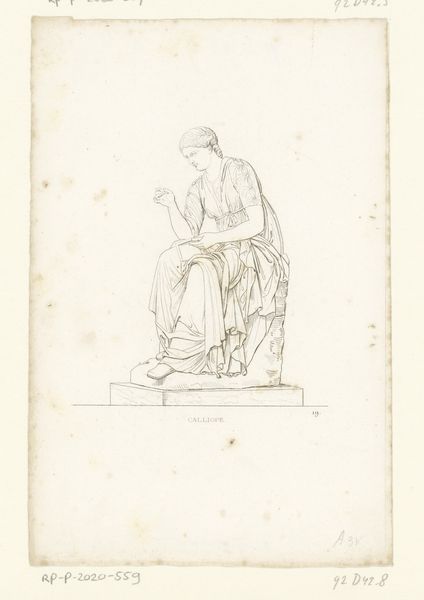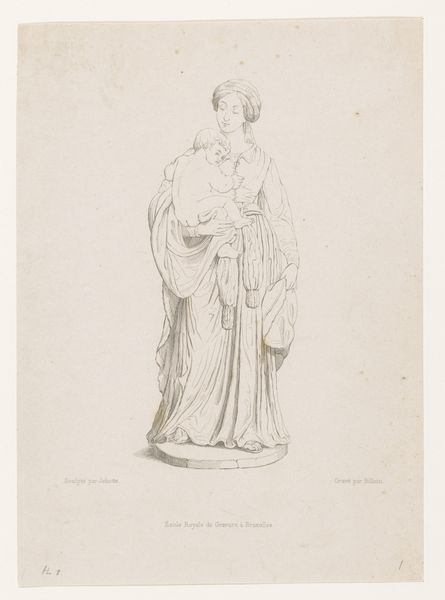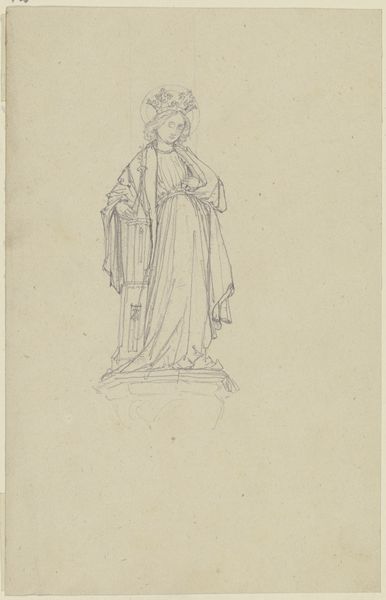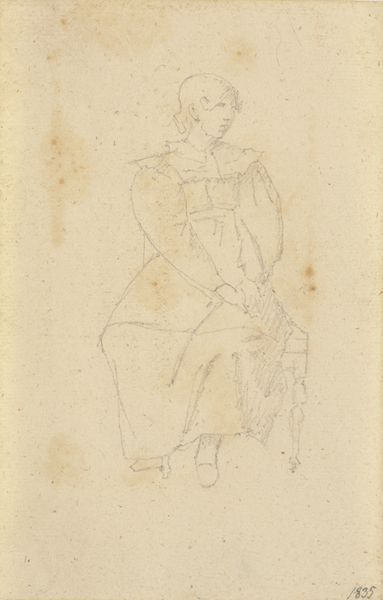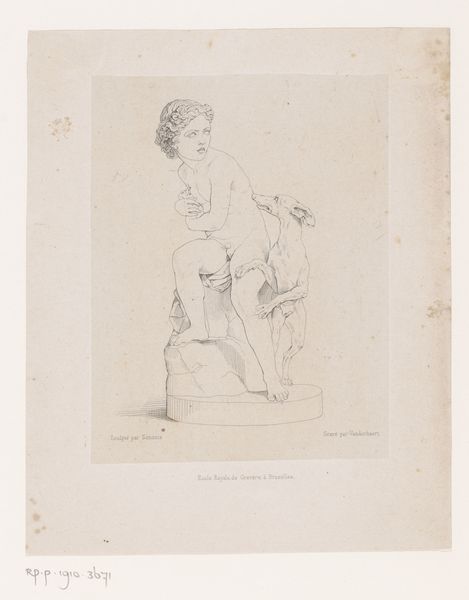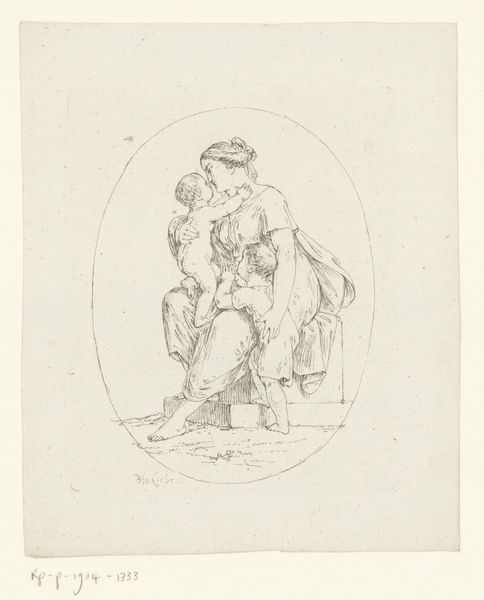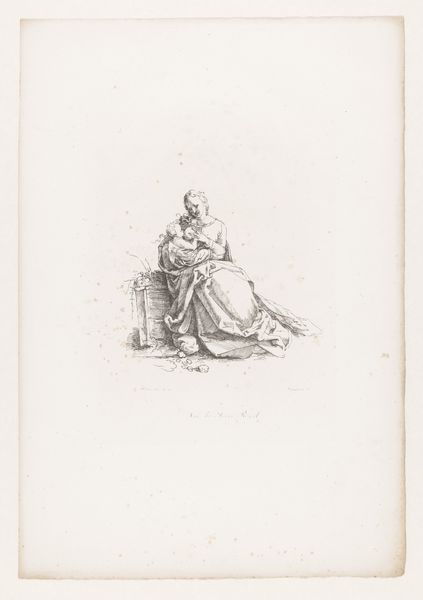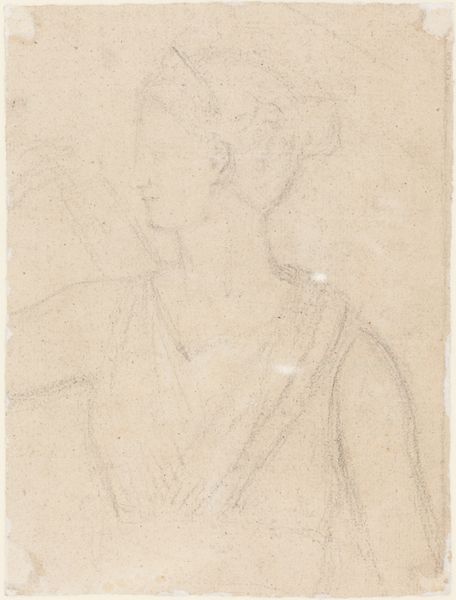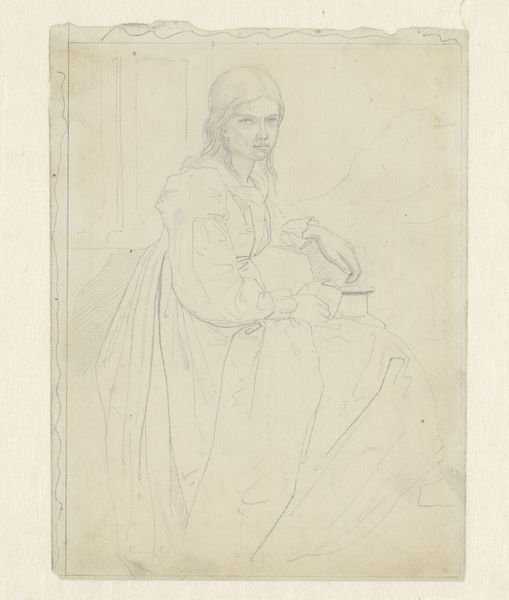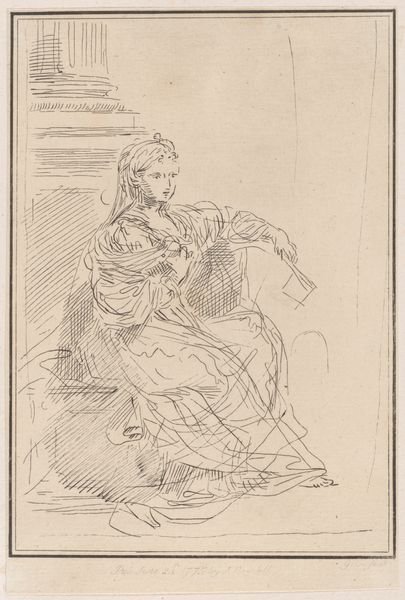
drawing, pencil
#
portrait
#
drawing
#
neoclacissism
#
classical-realism
#
figuration
#
pencil
#
academic-art
Dimensions: height 174 mm, width 116 mm
Copyright: Rijks Museum: Open Domain
Curator: Well, here we have "Clio," a pencil drawing created in 1829 by Étienne Achille Réveil. What are your initial thoughts? Editor: It has an ethereal, almost ghostly quality, wouldn’t you agree? The lines are so delicate, it barely seems to exist on the page. There's a lightness that makes me feel like it could disappear any moment. Curator: That airiness likely stems from its medium and purpose. As a drawing, pencil allowed Réveil to capture fine details of classical sculpture. It’s fascinating to consider that Réveil's drawing was not intended as a standalone piece, but likely served a reproductive purpose, facilitating the wider dissemination of classical forms through printmaking. Editor: Right, and think about the power dynamics there! Reveil, operating within academic art circles, creating a piece meant for wider distribution - thereby influencing the taste and aesthetic understanding of a broader public. The very act of copying, then mass-producing, impacts how society at large comes to view classical art and sculpture. Curator: Precisely! The accessibility afforded by prints democratized art to a certain extent, but it was filtered through the lens of academic standards. The pencil itself—think about the graphite, the paper— these are all commodities shaped by industrial processes, fueling the distribution of this classical imagery. Editor: I find it striking that he chose to represent Clio, the muse of history. In representing the figure this way, is Réveil commenting on history, recording it? Is he presenting us with how history is being disseminated and recorded in his era? Curator: Perhaps both. The choice of subject reinforces the classical ideals championed by academic art. Clio's seated pose and the scroll she holds are direct references to classical depictions of muses, perpetuating those ideals in early 19th-century visual culture. Editor: So this artwork really speaks volumes, doesn’t it, about artistic production and its place within both historical and cultural institutions? Curator: It really does. Réveil's drawing invites us to consider the intersections of classical art, reproduction, and the industrial processes that shaped the art world of his time. Editor: Definitely makes you consider the complex interactions between materials, means and reception, all within a single drawing!
Comments
No comments
Be the first to comment and join the conversation on the ultimate creative platform.

